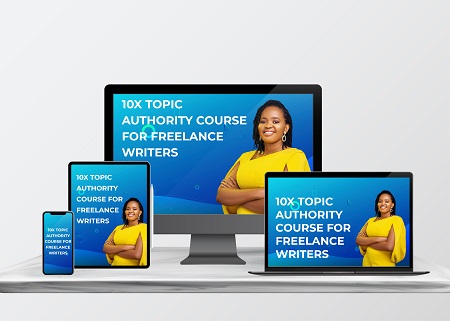Copywriting mistakes on a landing page don’t just hurt conversion. It could affect your online reputation and ruin the trust you’ve built with your customers.
When i started out as a copywriter, I used to write really long CTAs that filled out an entire line. I felt like a rock star because I didn’t know better.
There were no clear actions to take, the landing page looked chopped up and sometimes, I had three different CTAs on one landing page.
I was working with a boss who didn’t know better so we were all moving like sheep without shepherd.
I’m sure you’ve made mistakes in the early days. Some that make you cringe when you think of it and others that call for a deep belly laugh.
When done correctly, a highly-converting landing page should engage the reader, elicit action, and achieve your landing page goals.
If you outsource your landing page copywriting to a rookie who doesn’t understand conversion, you’ll get a copy that resembles a brochure or service page. None of which have the same goals as a landing page.
What is a Landing Page?
A landing page is the web page a user lands on from an Ad such as paid search or paid social media ad.
It is an essential tool for lead generation and inbound marketing. The goal of a landing page is to convince the visitor to take your call to action.
Landing pages attract the visitor, engages with great content and retains by collecting their email in exchange for an offer.
But what happens when your landing page is not doing any of the above? In most cases, the fault is from the copy.
Several errors could alienate your visitors and hurt conversion rate. If overlooked, you’re missing out on the opportunity to generate more leads for your sales team and increase your followership.
Discover which landing pages copywriting mistakes you’re making and get tips to fix them.
Which of These Landing Page Copywriting Mistakes is Costing You Money?
1. Focusing On the Wrong Audience

Aiming to please everyone is a recipe for disaster. A noticeable copywriting mistake that affects conversion is trying to write a copy that appeals to everyone.
You want many people to take your call to action, but that is impossible. You lose sight of your potential customers when you write for everyone.
This landing page from SAP is the perfect example of casting a wide net with no direction.
How to fix it:
The best landing pages only have one goal and are targeted towards a particular audience.
Focus on people who are most likely to patronize your business.
Your audience research reveals where they are in the sales funnel, the information they need to progress to the next stage and pain point awareness.
Infuse specificity and communicate your value through your landing page copy.
2. Failing to Test the Length of Your Copy
What is the ideal length of a landing page? 500? 1,000? 2000?
Initial studies argued that a landing page should be between 500 to 1000 words. They believed landing pages longer than 1,000 words had a reduced chance of converting.
However, search engine algorithms debunked this school of thought. SEO agencies and specialists tested both long and short landing page copy and found that longer content is better.
A study by conversion experts at Crazy Egg showed that a longer landing page got 30% more conversions than shorter landing pages.
Because of these divergent views, most sites churn out landing page copy without A/B testing various parts of the landing page.
Often, the copy is filled with fluff to reach the 1000-word mark. In other cases, it lacks sufficient information because the writer wants to stay within the 500-word target.
How to fix it:
Who’s to say what worked for Crazy Egg would work for you? Research is only a guide. You don’t have to write 2,000 filler words or a 500-word meatless copy because some experts suggested it.
Test each landing page to determine the length that works best.
“I notice increasing reluctance on the part of marketing executives to use judgment; they are coming to rely too much on research, and they use it as a drunkard uses a lamp post for support, rather than for illumination.”
David Ogilvy
3. Passive-aggressive Popups

Have you seen popups like the one above? They give you the option to sign up for an offer, and the decline button is passive-aggressive or in some cases, borderline rude.
They have texts like “No, I don’t want to be successful” or “Thanks, but I don’t want to learn.”
I find this annoying, plus it makes it easier NOT to take their call to action.
How to fix it:
Ensure your decline text is not rude or shaming your readers to do your bidding. Stick to simple text like “no, thank you.”
4. No Visuals
A study by Zabisco found out that the human brain processes 90% of its information in a visual format. It also said that landing pages with visuals outperform those without visual appeal.
Incorporate visuals in your landing page to engage your audience and encourage them to keep scrolling. Sometimes, a visual representation of your subject is more effective than long paragraphs.
How to fix it:
Pay a photographer to take high-quality images or hire a graphic designer to design custom images.
If you don’t have the budget, Stock Unlimited and Shutterstock are great resources to explore. Also, consider adding videos and infographics to your landing page .
Your landing page copy is easy to digest when they watch a video or see the key takeaways in an infographic.
5. Poor Readability

Jacob Nielsen studied how people read web content. They discovered that most web users scan rather than read web pages. 79 percent scan a new page they come across while only 16 percent read word for word.
Large chunks of text make it impossible to understand the critical information on your landing page
Take a look at this landing page from lingscars.com. There’s so much going on that you’ll feel overwhelmed if you try to choose. Is that a chicken I see on the page?
How to fix it:
- Use headlines, bullet point and subheadlines to break chunky paragraphs and organize your copy.
- Use larger text to highlight essential elements on the page.
- Read through your copy as a person who has never heard about your business. Does it make sense to you at first glance?
- Use words that a 7th grader would understand. Assume your audience doesn’t have your level of intelligence or flair for words.
- Put the most vital information first. This form of writing is known as the inverted pyramid.
- When in doubt, remember, less is more.
- Use tools such as the Hemingway app to grade the readability of your copy before publishing.
- Allow your copy to breathe. Embrace white space and keep spacing consistent.
6. Bland Headline
Research has shown that 8 out of 10 people will read headlines, but only 2 out of 10 will finish reading the copy. If your headline sucks, your readers bounce.
Your headline should be:
- Under 72 characters.
- Bold enough to grab attention and spark curiosity.
- Succinct, so the reader digests the information quickly.
- Specific, with a promise to solve a problem the reader faces.
- Compelling to make the reader scroll to the next line of text.
This article contains more tips for writing powerful headlines people click to read.
7. Focusing Only On the Positives

What’s wrong with focusing on the positives? Nothing.
But if you want higher conversion, think about the emotions you wish to evoke from your reader and why it may convert sales.
Buffer published a study on the science of emotion in marketing. The research shows that tapping into negative emotions stimulates the reader to take action.
Most landing pages focus on how their service or product boosts productivity. They ignore the other side of the human emotion and the role it plays in driving engagements.
Negative emotions like anger and confusion ruin conversion. But curiosity could motivate them to keep going.
How to fix it:
Experiment with negatives. Humans are influenced first by emotions and second by logic. Put yourself in the buyer’s shoes and consider the different emotions they feel throughout the buying process.
Consider how you want them to feel during the stages of conversion and create an experience that taps into each unique emotion.
Instead of saying,
“XYZ helps you stay fit,”
Say
“XYZ prevents weight gain.”
8. Mentioning Every Feature of Your Product or Service
Ever come across a landing page that goes on and on about how great the product is, but you’re bored out of your mind and move on to the next shiny thing?
It happens when a writer focuses on the features, not the benefit of your product.
No doubt that your product or service is excellent. But your customers don’t care about you. Tooting your horn won’t get you the results you desire.
What’s in it for the prospective customer?
Take a look at this landing page from DIRECTV. All features, no benefits.

“Watch recorded shows in up to 15 rooms with 1 DVR.”
The benefit is, “Save money on multiple dish networks. Watch recorded shows in 15 rooms with one DVR.
“Keep an eye on your kids even when you’re not in the room. Set separate parental control options for each TV”.
Describe the feature and sell it with the benefits.
How to fix it:
Tie each feature to a benefit. You don’t have to list all the features of your product. Highlight those that solve a significant problem your audience faces.
9. Sounding Too Sales-y
When something sounds too good to be true, it often is. If you try too hard to get the sale, your readers become suspicious and leave.
How to fix it:
Write in a conversational tone, like you were talking to a customer in a brick-and-mortar store. Use words your readers would be comfortable with. Be careful not to oversell.
Alternatively, hire a landing page copywriter that knows how to sell without sounding like an overeager salesman.
10. Complicated Calls to Action
What is a landing page without a call to action button that tells the reader what to do next?
There are thousands of landing pages with a well-written copy but no clear CTA.
Look at this example from the Content Folk. The copy is awesome. But where is the CTA? Zoom in, and you’ll find it at the top right corner with other navigation buttons.

Also, the font is tiny, and the CTA button has the same color as the landing page.
The tiny CTA button is swallowed up in the page design. Only a visitor that is actively looking will find it.
How to fix it:
Visitors should know what to do when they land on your page. Don’t hide your CTA button. It should be big and bold. Place it below the text where everyone can see it. Use contrasting colors and large fonts for your CTA buttons
Conclusion
Conduct research, leverage data, and write a personalized copy that persuades your visitor to take action.
Design is necessary, but it’s your landing page copy that holds all the power. For improved results, outsource to a professional copywriter who understands how conversion works on a landing page.
Want to avoid these rookie mistakes? Get in touch to learn how to generate leads and increase ROI with your landing page.





